Riparian Restoration: Tree Planting with H2C
Project Update and Science | conservation, riparian restoration, tree planting, and watershed | October 2021
Ashley Johnson, Science and Education Coordinator
On October 20th, Sarah (our watershed coordinator) and I drove to Barrhead to meet with Lisa Card from Highway 2 Conservation (H2C). The AWC and H2C are collaborating on a riparian restoration project.
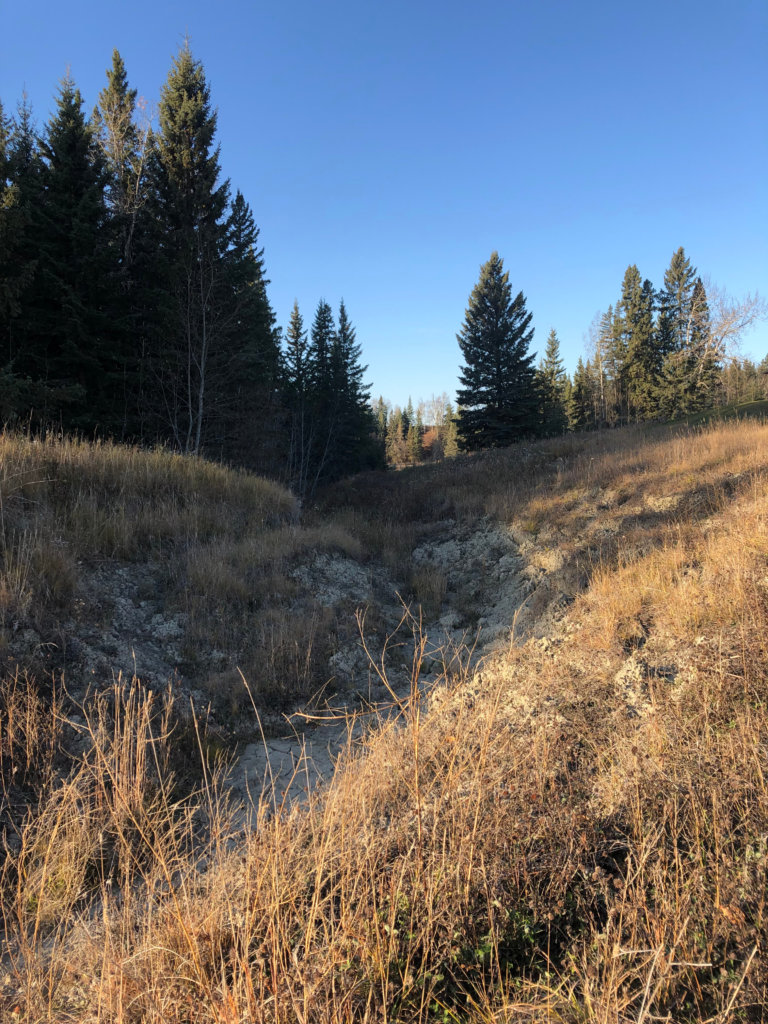
The site that Lisa and Sarah chose is a heavily eroded stream that flows into French Creek (a tributary of the Pembina River).

Before we could go to the site, we had to prepare some stakes.
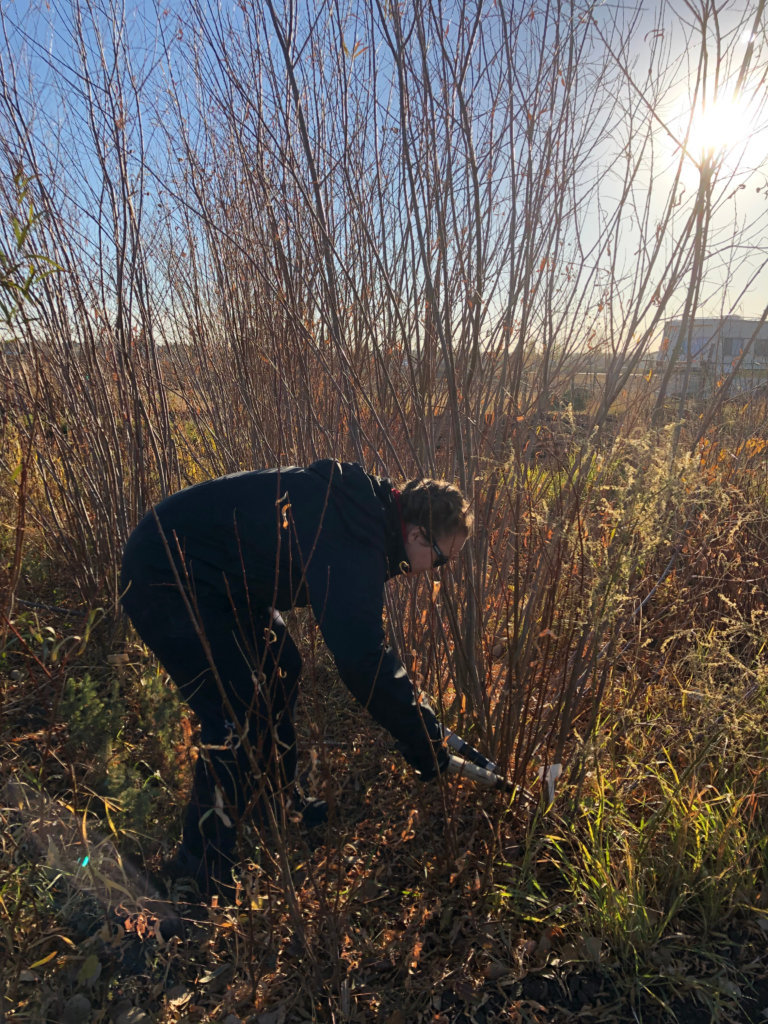
Trees like willows, dogwoods, and poplars can be cut into stakes, between 15 and 30 cm long.
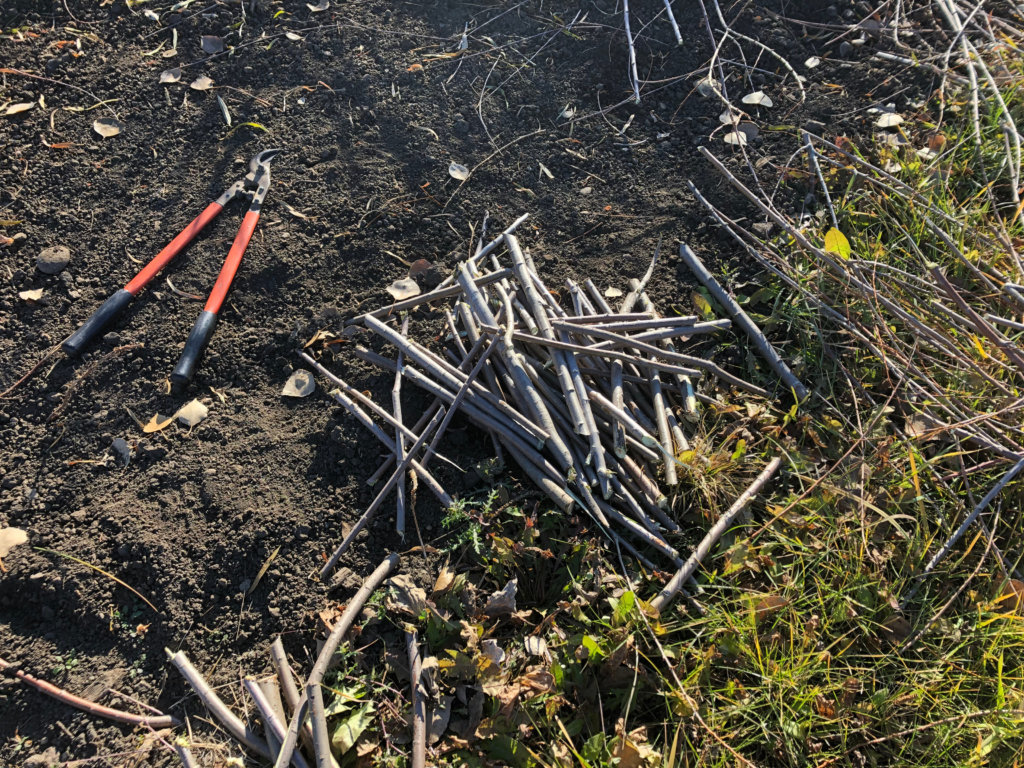
These stakes get cut and driven into the ground in the fall, when the tree is dormant. Once spring arrives, they’ll start to send roots into the ground (provided we get enough rain).

We cut stakes of sandbar willow, pussy willow, and beaked (also called Bebb’s) willow, red osier dogwood, and balsam poplar. Once we had cut our stakes, we were done for the day, and ready to head out the next morning to plant them!
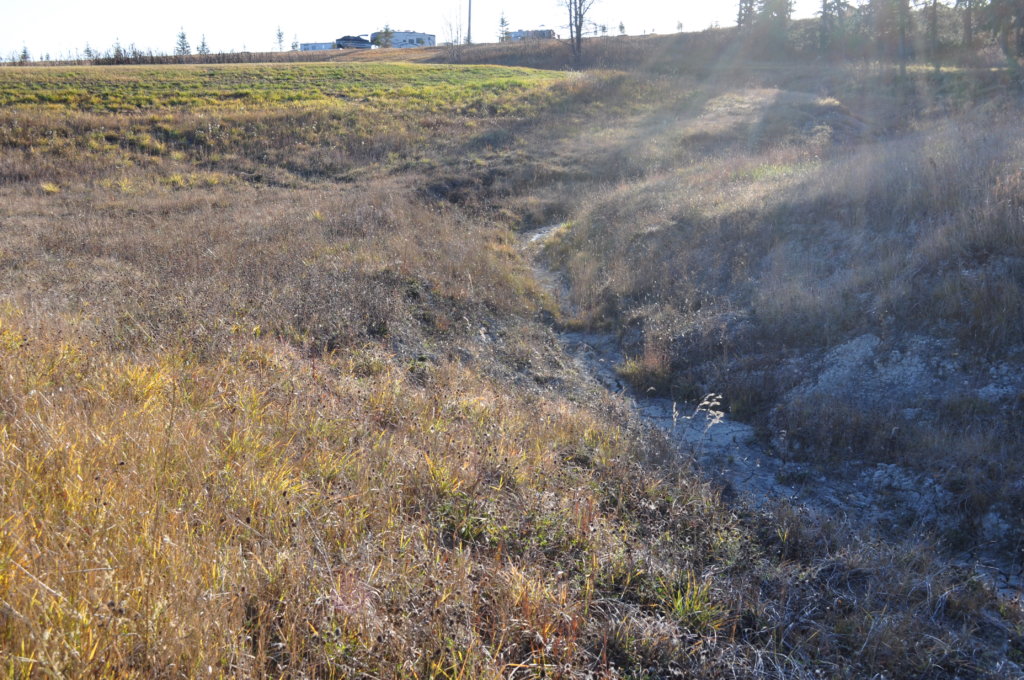
The morning of the 21st, I borrowed my parents’ truck and 60-gallon water tank (the stakes have to be watered once they’re in the ground) and headed out to our restoration site with Sarah, where we met up with the landowner of the site, Lisa Card, and our executive director Petra.

From there, we got to work. Across the site (which was approximately 0.75 acres), we staked over 500 trees.
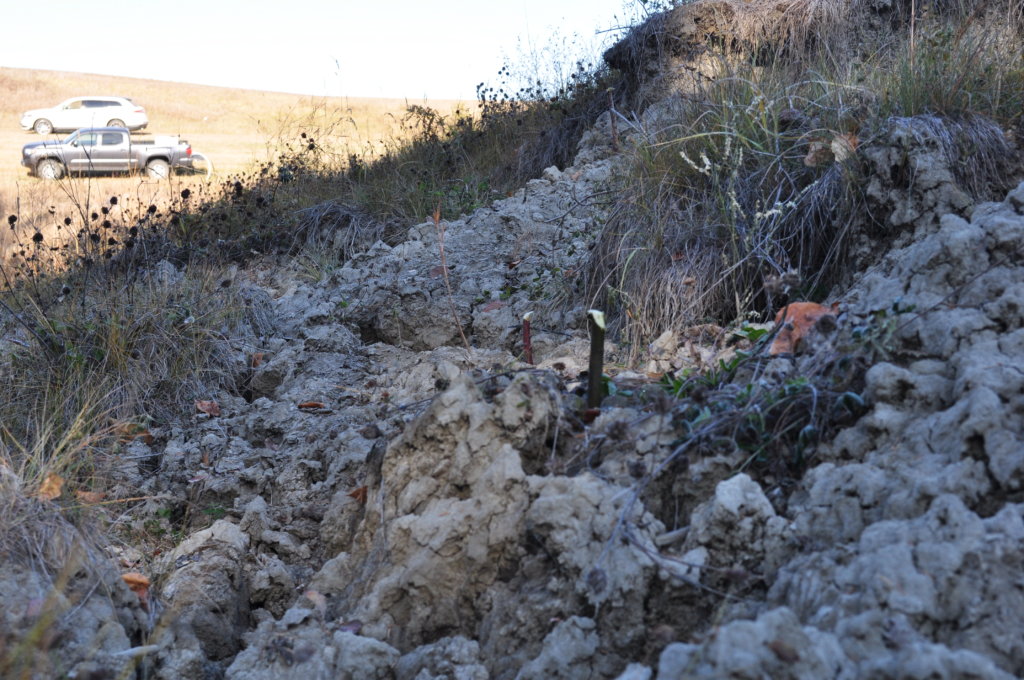
We’ll return to the site in the spring to plant some native grasses, saskatoon trees, chokecherry, and pincherry. The cherries and saskatoons are wildlife plantings—they will provide food for birds and other wildlife as well as helping out pollinators.

Many hands made light work, and we finished early enough to go with Lisa Card to a wetland restoration site she’s working on in Westlock County.

I’m excited to go back out to the riparian site in the spring to see how it’s looking, and to plant some more!
